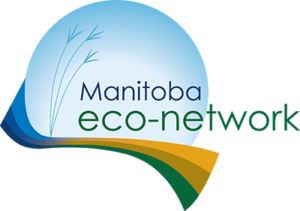Disappointment Over Approval of Mega Dairy Operation in North Dakota
WINNIPEG, M.B. — Groups from Canada and the United States are disappointed that a mega dairy operation has been approved by the State of North Dakota. The 25,000 cow operation, known as Herberg Dairy, will have a devastating impact on the Red River and Lake Winnipeg. This is the second mega dairy operation within 1.5 miles of the Red River and its tributaries to be approved in North Dakota in recent months.
“Water doesn’t recognize political boundaries. The Red River and Lake Winnipeg simply cannot take any more pollution,” said Vicki Burns, Director of the Save Lake Winnipeg Project. “We are troubled to learn that North Dakota has approved this dangerous project and are calling on the provincial and federal governments to step up and protect our waterways before it is too late.”
The Abercrombie dairy operation, approved in January, will confine 12,500 cows. Together, the operations will produce massive amounts of animal waste, comparable to a city with a population of 1.5 million people. Unlike a city, waste from the mega dairy operations will be stored in massive lagoons the size of 52 Canadian football fields and there will be no municipal wastewater treatment.
“These massive operations will confine a staggering 37,500 cows in crowded and unnatural conditions, and will have a devastating impact on the environment here in Manitoba,” said Kaitlyn Mitchell, Winnipeg-based lawyer and director of legal advocacy with Animal Justice. “This is a stark reminder that ignoring the health and well-being of farmed animals harms not only the animals themselves, but also human and environmental health. The downstream impacts of this manure could be a death knell for the Red River and Lake Winnipeg.
When excess manure slurry is spread on agricultural fields as fertilizer, it can lead to the accumulation of nutrients, including phosphorus nitrogen in rivers and lakes. Phosphorus and nitrogen feed the often-toxic blue-green algae blooms in Lake Winnipeg, posing significant health threats to humans, animals, and all aquatic life.
Pollution from the North Dakota mega dairy operations will also contain other contaminants, such as antibiotics, hormones, bacteria, and heavy metals.
“Under the Boundary Waters Treaty, Canada and the United States have agreed to needed nutrient loading targets recommendations set by the International Joint Commission,” said James Beddome, Executive Director of Manitoba Eco-Network. “If these new mega dairy operations go ahead, it will be virtually impossible for the United States to keep its side of the bargain. We need the federal and provincial governments to stand up for Canadians and the waterways on which we depend.”
The target for phosphorous set by the IJC in 2022 is 1400 tonnes per year — a reduction of approximately 45% from current levels. The groups are calling on Canada to refer this issue to the IJC to provide recommendations to resolve this transboundary water threat.
CONTACTS
Vicki Burns
Director Save Lake Winnipeg Project
vickiburns@mts.net
Kaitlyn Mitchell
Director of Legal Advocacy, Animal Justice
kmitchell@animaljustice.ca
James Beddome
Executive Director, Manitoba Eco-Network
executivedirector@mbeconetwork.org

